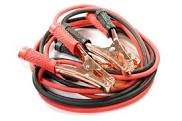Steve,
If I understand you, your links are formed and 'cut out' brass sheet metal that connect the (+) binding posts between bass and tweet, and another connecting the (-) binding post the same way. This should allow you to try the 'diagonal' jumpers. Can you just hook up the links as intended and simply connect your speaker cables with the (+) red to the tweeter binding post and the (-) black speaker lead to the bass binding post?
Looking forward to your impressions.
Regards,
Paul
EDIT: The jumpers in 'diagonal jumpers' are configured exactly the same as in what one thinks of as normal jumper configuration, for bi-wired speakers, for each speaker, one jumper connecting both (+) / Red binding posts, and one jumper connecting both (-) / Black binding posts.
It is the speaker cables connectors that are hooked up diagonally to the speaker's binding posts, cable's (+)/red connector to the tweeters red binding post, and the cables (-)/black connector to the bass unit's black binding post. That is AudioQuest's (and my) preference.
Nordost's recommendation is the other diagonal....

